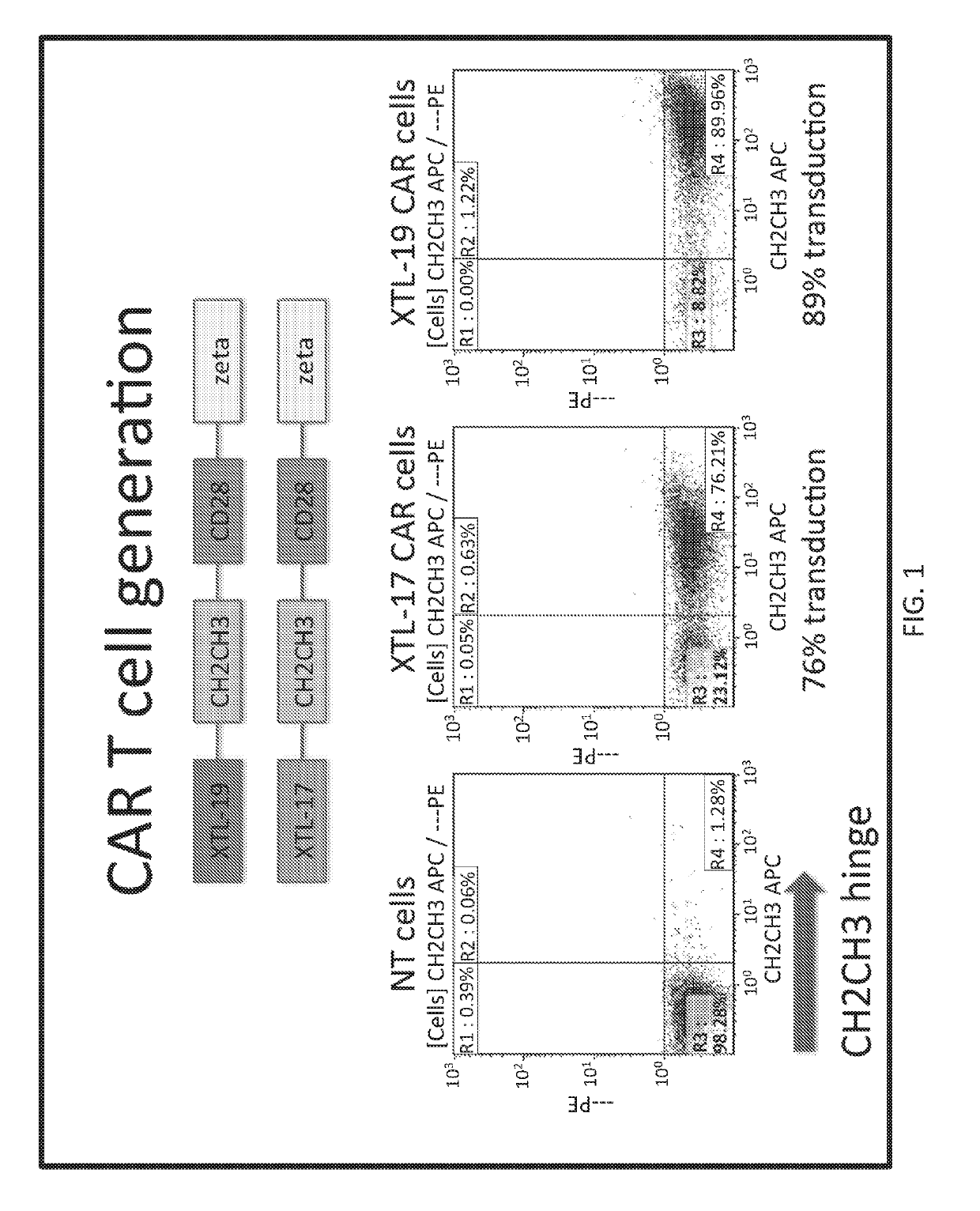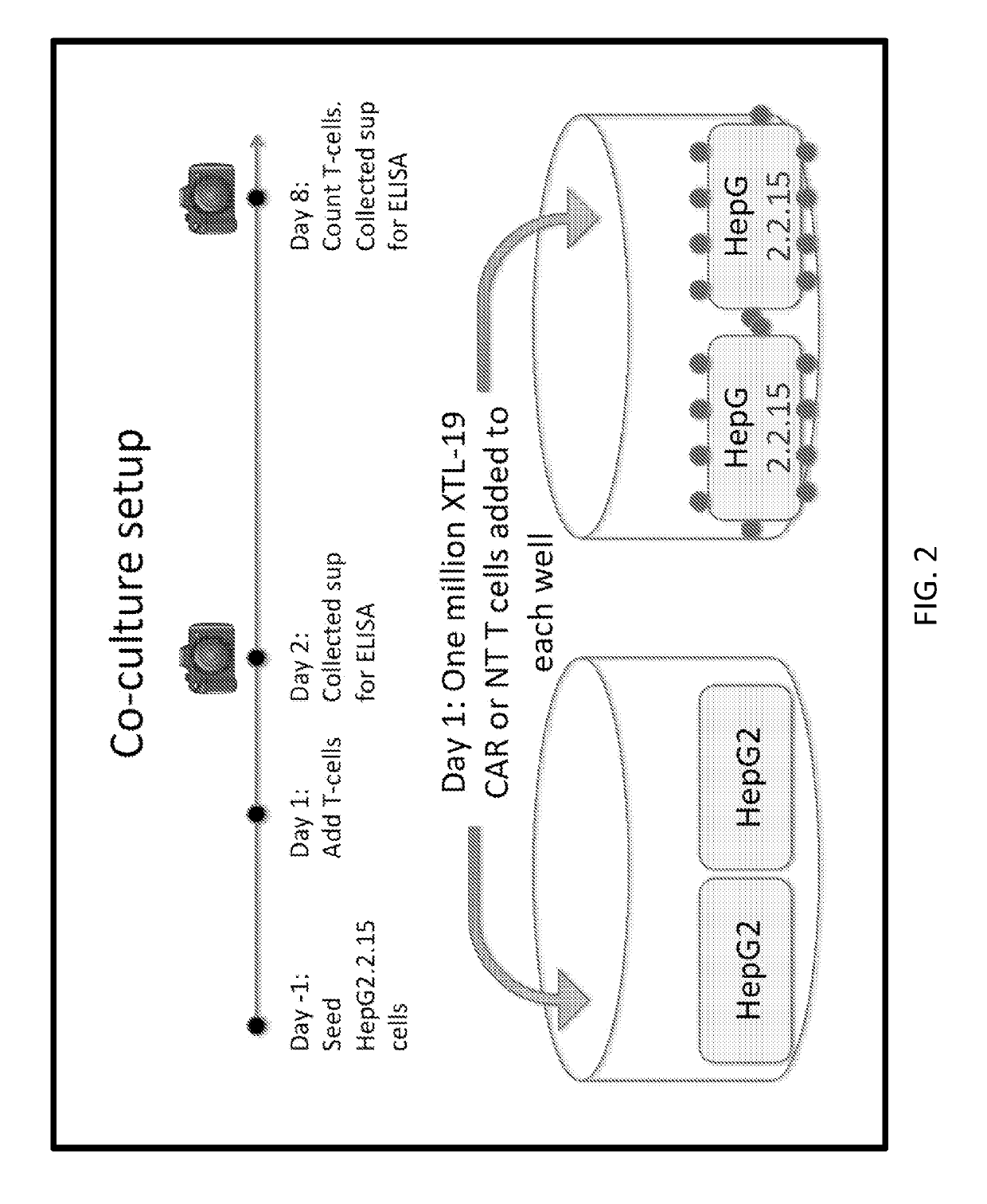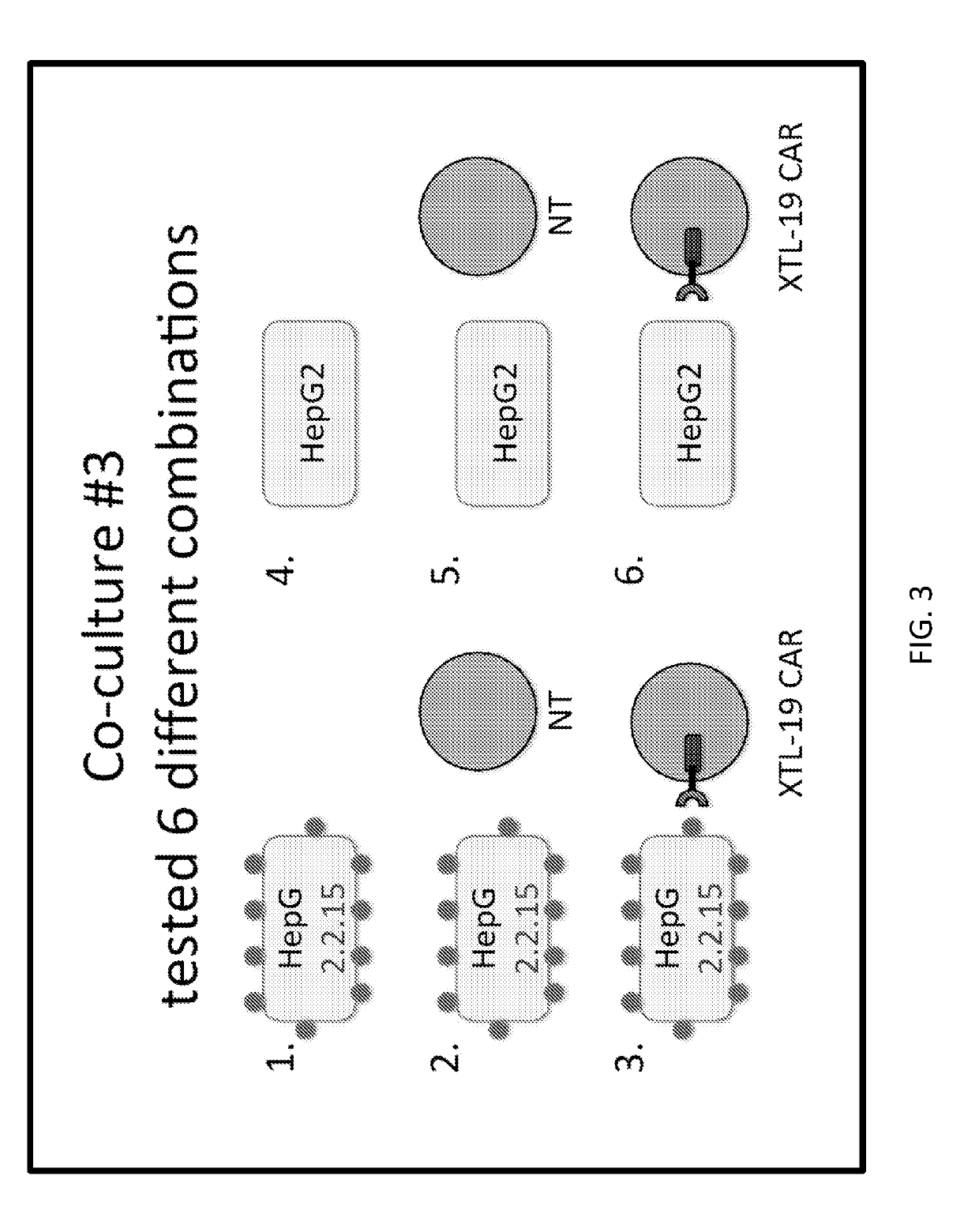Chimeric antigen receptor therapy with reduced cytotoxicity for viral disease
a chimeric antigen receptor and cytotoxicity technology, applied in the field of immunology, cell biology, molecular biology, medicine, can solve the problems of hbv-specific t cell numbers and functional deficit, significant side effects in patients, and inducible hbsag seroconversion
- Summary
- Abstract
- Description
- Claims
- Application Information
AI Technical Summary
Benefits of technology
Problems solved by technology
Method used
Image
Examples
example 1
Chimeric Antigen Receptor Directed T Cells can Mediate Antiviral Effects Against Hepatitis B Virus in a Humanized Liver Model of Infection
[0141]Chronic hepatitis B virus (HBV) can only be suppressed by current drugs today in most patients, and a need for a permanent cure for this patient population remains. In patients who clear acute HBV infection, an effective T cell response infiltrates the liver, but patients with chronic HBV have deficient antiviral T cells. This problem was addressed by engineering T cells with a chimeric antigen receptor (CAR), having specificity toward HBV surface antigen (HBsAg), which is noted to accumulate on the surface of infected hepatocytes.
[0142]Previous studies showed that HBsAg-targeted CAR T cells were efficacious in vitro at killing HBV+ cell lines and in clearing HBV covalently closed circular DNA (cccDNA) in primary human hepatocytes in cell culture. These HBV CAR T cells were also tested in a transgenic HBV mouse model, and exhibited a modest ...
example 2
Chimeric Antigen Receptor Therapy with Reduced Cytotoxicity for Infectious Diseases
[0144]The present disclosure provides a general strategy of cell-based immunotherapy to treat various viral indications, particularly in infections targeting crucial organs where toxicity may be an issue and cell death may not be desired, but rather cytokine secretion and activation host intracellular innate immune pathways and of more specific CTL and NK cell effectors is desired. This particularly has useful general applications of cell-based immunotherapy for treating individuals with compromised immune systems for viral infections.
[0145]Present embodiments include targeting of Hepatitis B virus, where the inventors have shown that administered HBV-specific CAR T cells are effective against HBV in a clinically-relevant mouse model. Demonstrated herein are optimizations over the prior art for a chimeric antigen receptor (CAR) design for this purpose. Also encompassed herein are additional modificati...
example 3
HBSAG-Redirected T Cells have Potent Antiviral Activity in HBV-Infected Human Liver Chimeric Mice
[0153]Because HBV cannot presently be cured, it was considered whether CAR therapy could result in permanent reductions in HBV levels. This was examined by testing HBsAg-redirected CAR-T cells to treat HBV-infected humanized mice.
[0154]A CAR was developed against HBsAg using two human antibodies, XTL-17 and XTL-19 that are specific toward a variety of HBsAg serotypes. CARs were prepared with single chain variable fragments (scFvs) from these antibodies with a human IgG1 Fc domain as the hinge domain and CD28 and CD3 zeta endodomains. The activation of CAR-T cells was verified when incubated with HepG2.2.15 cells positive for HBV. XTL-19 CAR-T cells released IFN-γ, TNF-α, and IL-2 at 24 hours, expanded in number, and after a week of co-culture, HepG2.2.15 were completely eliminated (FIG. 12). The XTL-17 CART cells, in contrast, did not show a similar release of IFN-γ, TNF-α, or IL-2 at 24...
PUM
| Property | Measurement | Unit |
|---|---|---|
| spherical size | aaaaa | aaaaa |
| time | aaaaa | aaaaa |
| synergistic affinity | aaaaa | aaaaa |
Abstract
Description
Claims
Application Information
 Login to View More
Login to View More - Generate Ideas
- Intellectual Property
- Life Sciences
- Materials
- Tech Scout
- Unparalleled Data Quality
- Higher Quality Content
- 60% Fewer Hallucinations
Browse by: Latest US Patents, China's latest patents, Technical Efficacy Thesaurus, Application Domain, Technology Topic, Popular Technical Reports.
© 2025 PatSnap. All rights reserved.Legal|Privacy policy|Modern Slavery Act Transparency Statement|Sitemap|About US| Contact US: help@patsnap.com



